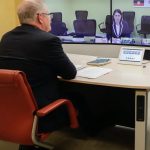Web 2.0 democratising health
The widespread use of the internet means that availability of innovative web tools and processes (Web 2.0) to assess, monitor, evaluate, collaborate and explore medical conditions by both patients and practitioners is a reality.
There are a wealth of sites and tools currently available but the level of innovation is yet to explode. What can Web 2.0 technologies do to improve a patient’s ability to cope or contribute to their eventual health?
This short blog touches on key web resources related to awareness of information, navigating the forest, key themes (like drug-drug interaction and diet), confronting the system and taking control. There is so much more that Web 2.0 can assist with patients helping patients and patients helping doctors that is yet to be realised.
In this context democratising health is about recognising that patients are increasingly equipped to dialogue with professionals and evaluate the appropriateness of their treatment.
There is a quiet revolution going on under the noses of most medical professionals and health systems. It is a revolution about information access, equity of access and participatory medicine. The old adage that the ‘doctor knows best’ is being questioned, initially by those of the baby boomer generation but especially by the millenniums.
The huge increase in the incidence of complex chronic disease means that primary care practitioners simply are unable to keep up with the latest research, new modes of treatment and, in Australia, rarely participate in team based care provision. Our primary model is one of lone practitioners providing services in sequence.
Did you know that the internet provides opportunities to:
- List your drugs and determine drug-to-drug interactions on sites such as media guard and nps.
- Read the latest published medical articles on a particular condition of drug protocol on sites including Intel Health, The Lancet and Up to Date.
- Consult with a doctor via the internet for a second opinion, one example being eCleveland Clinic.
- Join in discussion with others suffering from a similar condition through forums such as Patients Like Me or e-Patients.
- Understand you blood results with the help of tools like Lab Tests Online.
- Map the likely progression of a condition over time and assess its severity, see Cure Together.
- Understand how your body works at Visible Body.
- Access specialised sites for particular conditions such as rheumatoid arthritis or cancer.
- Lookup overall health references and data at a repository such as Web MD.
Many users of the internet are typically presented with passive information display sites. But these are increasingly being replaced by interactive sites; supporting tools, providing chat room facilities and video.
Mobile phone based applications now number in the hundreds with many related to fitness, diet and medical calculators. The direction of movement is to supplement facts and education with decision support and collaborative environments. The most successful of these are sites where patients exchange information, drug use and the quality of their medical care.
There are very few sites where patients together with health professions interact in real time.
All this challenges the current modus operandi of most medical care delivery outside the acute sector. For a doctor to spend two hours with a paitent exploring and evaluating their condition via internet based tools and their own office resources questions the model of incentive payments, health insurance and medical indemnity insurance.
The practicality of simply adding these services to a General Practice is unlikely to be feasible. Moving patient-doctor discussion and preliminary diagnosis on to the web may present a first step in developing new delivery models.
What would happen if a doctor charged $5 for an email reply to an emailed question? Can you even email your local doctor?
Yet there are medical groups who recognise the opportunities and are entering the dialogue. Perhaps the best of these are a group of medical professionals and patients who see internet technologies as a major support for providing better health outcomes: “Participatory Medicine is a cooperative model of health care that encourages and expects active involvement by all connected parties (patients, caregivers, healthcare professionals, etc.) as integral to the full continuum of care.”.
But what of the future? The ability of Web 2.0 technologies and social networking sites to merge and mix health data, personal information and other types of information (commonly known as mash-ups) combined with the increasing popularity of mobile devices suggests that medical doctors, nurses, allied health professional and patients along with their carers may well be pushed down innovative ways of building new health care delivery models.
What is increasingly evident is that demand by patients and their carers for better access, for better tools and to engage in the dialogue about their own care is strong and increasing.
Michael Gill is Director, Internet Business Solutions Group, Cisco Systems Inc. Currently, he is deeply involved in matters health from two unique perspectives: how connectivity can improve health outcomes and using Internet technologies for chronic care. He maintains a strong interest in the use of internet technologies in the areas of general nursing, maternity, aged care and mental health. Michael holds a degree in Statistics and Sociology and post graduate studies from the Australian National University. Michael is also Chair of the Australian National Consultative Committee on Electronic Health. In 2009 he chaired the GAP – Australian Centre for Health Research Health Congress held in Parliament House, Victoria.
Michael Gill is the founder of Dragon Claw and a former board member of the Health Informatics Society of Australia. He was formerly the director of healthcare Internet strategies for Cisco Systems and has worked in the health systems of Australia, India, Singapore, Hong Kong and New Zealand.















dzsands
March 7, 2011 at 11:36 pm
Nice Post!
Nice post, Michael.
I wanted to tell you that:
1. There is a great deal of health information available online, some of it authored or crowdsourced by patients/patient communities.
2. Health professionals often participate in patient community discussions like ACOR.
3. ACOR is not just a cancer information site but a cancer community that has helped more almost half a million patients since it started
4. E-mail is terribly underutilized, despite value to all stakeholders. In 1998 I co-authored the very first guidelines for their use and proposed benefits: https://www.amia.org/mbrcenter/pubs/email_guidelines.asp (with a later discussion here: http://www.nejm.org/doi/full/10.1056/NEJMp038209).
Keep up the good work!
george@margelis.com
March 11, 2011 at 12:05 pm
Information is the start, but healthcare requires action
Information is the life blood of healthcare, and the democratisation of healthcare related information is a great start, but to actually affect the health outcomes action is required. To do that we need tools which not only inform the patient (or consumer in current terminology) but also enable them to act upon that information.
Action can range from changes in lifestyle to taking very powerful drugs, or even surgery. It is critical that the patient understand these options, and the plethora of information on the web today can make that easier. However if they need to interact with a healthcare provider then we need to start using tools like telehealthto enable them to take action in the comfort of their own home, and not require them to waste time travelling to and from a doctor’s clinic or a hospital.
The nett benefit of this is two fold, one the patient can get support for their actions in an environment that is better for them, and it also frees up the expensive resources of clinics and hospitals for those who need it. That way we can decrease waiting times in emrgency departments, better utilise clinical staff, and make for a more efficient system without the continuing need to build new hospitals and "super clinics" to manage the demand.
Dr George Margelis
http://www.georgemargelis.com
Stan Goldstein
March 14, 2011 at 4:38 am
Partipatory Medicine and Web 2.0
Thanks Michael.
How will the web, the individual, and modern healthcare interact – a subject rich in possibilities.
It’s clearly time that we start to shift focus in ‘health’ from reacting to the Web, towards taking a systemic approach (the broader health system) to designing healthcare to meet modern possibilities and holistic health (health in its broader sense) needs.
That there are isolated resources, each of which does its job exceptionally well, is a good thing. However silos of information will no doubt deliver gaps into which even the well-informed patient will fall, just as we see silos of healthcare create gaps in care through which patients can fall. Even the patient who tries to be well-informed has to contend with the need to make sense of the information available, especially with regard to reliability and relevance to the individual’s circumstances.
Yet less discussed pitfalls are the problems of connecting information, accessing the right ingredients from which to draw a valid conclusion and synthesising knowledge and solutions from multiple information sources, trying to ascertain the best or even a valid solution to the question the ‘patient’ is asking (and is this different to the question the patient should have been asking?).
While individual clinicians might be looking to make better use of the Web and Web 2.0, I’m hopeful that those with a broad mandate to improve health systems and health outcomes are also prepared to take the lead and develop a framework to help guide both the clinicians and the patients interested in being in this space, and to design a way to bring together the types of resources you’ve mentioned into a safe and sound toolset for health system users – providers and patients, carers and policymakers.